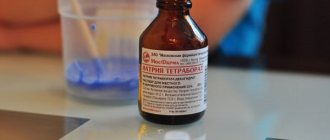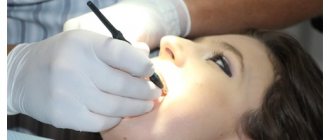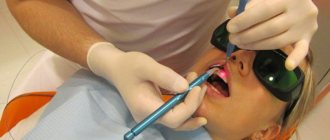During pregnancy, women often have to deal with thrush, which sometimes “haunts” the expectant mother. There are many reasons for the recurrence of the disease - from decreased immunity to resistance of Candida fungi to many medications. In desperation, girls turn to long-forgotten remedies and preparations, for example, one of these is sodium tetraborate in glycerin. Can it really help get rid of thrush, is it safe during pregnancy?
The main effect of borax in glycerin
Sodium tetraborate is a substance based on a boron compound. It is used for industrial purposes, veterinary medicine, and has also found its application in medicine.
Sodium tetraborate is an antiseptic. This means that its main effect is associated with the inhibition of the vital processes of microbes.
That is why sodium tetraborate is widely used to treat chronic tonsillitis, diaper rash and other similar diseases.
It does not have a direct fungicidal effect on fungi, but affects other processes, thereby creating unbearable conditions for the further development of thrush.
Thanks to the following effects of the drug, you can get rid of candidal colpitis:
- During the treatment, fungi are mechanically removed from the vaginal mucosa.
- It affects candida, disrupting their ability to attach to epithelial cells. This prevents the proliferation of the fungus, which ultimately leads to the complete disappearance of the pathogen.
- Often thrush is a “companion” of other sexually transmitted infections. Sodium tetraborate has a detrimental effect on many pathogenic microorganisms, thereby helping to restore the balance of flora in the vagina. This leads to the disappearance of symptoms of thrush, including.
We recommend reading the article about colpitis in early pregnancy. From it you will learn about infectious and non-infectious causes of colpitis in a pregnant woman, and treatment methods.
And here is more information about thrush as a sign of pregnancy.
Contraindications for use
Sodium tetraborate is a toxic substance in certain doses, so its use should be approached with special vigilance, following all doctor’s prescriptions. It is safer to use a 5% solution strictly according to the instructions.
The restrictions on its use are as follows:
- You should not use the drug if hypersensitivity reactions to it or the like have previously been recorded.
- During pregnancy only according to strict indications and doctor's prescription. When used during lactation, you should refrain from breastfeeding for the period of treatment.
- It is not recommended to apply the drug to damaged areas of the skin, as this will lead to its intensive entry into the general bloodstream. This increases the risk of overdose.
- For the treatment of thrush, it should not be used in the presence of injuries to the vaginal mucosa (cracks, chemical burns after douching, etc.).
- Children are allowed to use the product only as prescribed by a doctor.
Watch the video about thrush during pregnancy:
Is this product safe?
Borax in glycerin is successfully tolerated during pregnancy. But the development of the following side effects is possible:
- local irritation of the skin;
- in case of overdose, it has a toxic effect on the woman’s nervous system, which can manifest itself in convulsive syndrome.
If, after using borax in glycerin as a douche or inserting a tampon, a woman experiences a burning sensation, she must immediately stop contact of the mucous membranes with the drug and rinse them thoroughly with running water.
The same can be advised in case of diarrhea and twitching of the muscles of the face and limbs - most likely, the drug is not suitable for a woman, you should immediately stop using it and seek advice from a doctor.
You also need to remember that sodium tetraborate can accumulate over time in bone tissue and in the liver, causing a damaging effect on them.
To avoid this, you should not abuse the use of borax in glycerin and allow an overdose of the drug, and also use it for people known to suffer from osteoporosis and liver pathologies.
Is it possible to sodium tetraborate in glycerin during pregnancy?
In the instructions for the drug, pregnancy is a relative contraindication for treatment with sodium tetraborate. This can be explained by the following facts:
- The safety of the drug on the developing fetus has not been established, since tests on pregnant women and children are prohibited.
- To treat thrush, you should douche or put tampons. How safe it is for a particular pregnant woman can only be decided by a doctor. For example, in case of a threat, ICN and many other cases, this should not be done.
- Sodium tetraborate does not have a direct fungicidal effect, so it is inferior to many antifungal drugs.
The range of drugs with proven safety for the treatment of thrush during pregnancy is quite large, so it is easier and more reliable to choose one with proven effectiveness and targeted action.
Treatment options for thrush
In the case when preference for the treatment of thrush is still given to sodium tetraborate, you should choose the most appropriate form of use of the drug. The options are as follows:
| Mode of application | How to use |
| Douching | Before carrying out, all hygiene procedures should be carefully completed. It is also useful to douche with chamomile or calendula before borax. Course – 10 – 14 days 1 – 2 times a day. |
| Tampons | To prepare them, you should take a gauze napkin and make something like a ball. Moisten it generously in the solution and place it in the vagina for 20 - 30 minutes. This should be done 1-2 times a day for a week or two. |
| Lubricating the vaginal mucosa with sodium tetraborate solution | To do this, wrap your finger in gauze and moisten it generously in the preparation. Then carefully treat all vaginal walls. The course is at least 10 days. |
| Mouth rinse | In case of candidiasis of the oral cavity, rinse with a solution of sodium tetraborate several times a day. |
Inconveniences you may encounter
Sodium tetraborate is presented in the form of a solution. And it is an antiseptic, not an anticandidiasis drug. Therefore, there are some difficulties in treating with this drug. Namely:
- It is advisable that the vaginal rinsing with the solution be carried out by medical personnel. Firstly, they will carry out the procedure safely, without injuring the mucous membrane. Secondly, with strict adherence to the dose.
- Treatment with sodium tetraborate lasts for weeks. To get rid of thrush you will need at least 7 to 10 days of douching or tampons.
- There is a high risk of relapse of candidal colpitis.
Composition and properties
Borax in glycerin is an antiseptic, which in pharmacology is called sodium tetraborate. The drug is based on boric acid.
It is used in the pharmaceutical, perfume, cosmetology and food industries. Borax in glycerin is available in the form of a solution of 5, 10 and 20% concentration. The duration of treatment with the drug is determined by the attending physician.
During pregnancy, borax in glycerin is prescribed in the form of a 5% solution. The same concentration of the drug is indicated for the treatment of oral thrush in a newborn.
The taste of the drug is neutral. It is not recommended to administer a more concentrated solution to expectant mothers, as it may have a toxic effect and cause side effects in a pregnant woman.
Borax in glycerin simultaneously has antifungal, antiseptic, anti-inflammatory, antibacterial and insecticidal effects.
Frequently asked questions about the use of sodium tetraborate during pregnancy
Trying to cope with thrush, pregnant women often ask questions related to the use of sodium tetraborate. The most popular ones include the following:
- Can borax be used to treat thrush in little girls? In children under 3 - 5 years of age, vulvovaginal candidiasis can also occur due to poor hygiene, taking antibiotics, etc. The issue of using sodium tetraborate should be decided together with a gynecologist and pediatrician. If there is a concomitant bacterial infection, the drug is suitable for sanitation, but only strictly following the instructions and recommendations of specialists.
- What are the side effects from taking it? It should be remembered that sodium tetraborate in high doses (20 - 30 g) has a toxic effect on the human body. It’s not for nothing that it is used as an insecticidal drug to kill insects. Therefore, for douching and tampons, it is better to use a 5% solution.
Sodium tetraborate can cause tissue irritation resulting in hyperemia, redness, itching, and burning. And if you experience abdominal pain, nausea or vomiting, or seizures, you should immediately seek medical help.
- Will it harm a developing baby? It is unknown how harmless the drug is to the fetus. Sodium tetraborate was widely used in Soviet times for the treatment of pregnant women; no special violations of embryo development were identified.
- Can I use it without a doctor's prescription? It is optimal if the vagina or skin is washed by a doctor or midwife, especially during pregnancy. This way you can achieve the maximum possible result with minimal consequences and risks.
- Can it be used if there is a pessary? Indeed, when using a pessary, the risk of developing colpitis, including candidiasis, increases. But it is better to use sodium tetraborate only as prescribed by a doctor, taking into account the clinical situation.
- Can douching be done at any time? Will this pose a risk of miscarriage? Douching can be carried out at any stage, the main thing is that at the time of treatment there is no threat of interruption (the uterus was in normal tone, there was no bleeding, as well as signs of abruption according to ultrasound).
Sodium tetraborate on its own is unlikely to cause abortion, but using the product off-label, inept douching or inserting tampons can provoke this.
Preparing for pregnancy with infectious pathology of the female reproductive system
The introduction of modern technologies into clinical practice has made it possible to expand research and show that the negative impact of environmental factors on the microflora of the macroorganism leads to a variety of pathologies of both inflammatory and non-inflammatory origin. Despite significant advances made in the diagnosis, treatment and prevention of sexually transmitted infections, their frequency does not have a clear downward trend. The latter is also associated with the increase in immunodeficiency conditions against the backdrop of deteriorating environmental conditions, poor nutrition, frequent stress, a pharmacological boom with the uncontrolled use of drugs, primarily antibiotics, etc. Most often, sexually transmitted infections are caused by several pathogenic factors - viruses, microbes, fungi , protozoa, which cause diseases similar in clinical course, but different in pathogenesis and treatment methods.
Participation in the formation of inflammatory diseases of the pelvic organs, accompanied not only by vaginal dysbiosis, but also by similar changes in the gastrointestinal tract and urinary system; psycho-emotional disorders; the formation of immuno- and interferon-deficient states - this is not a complete list of problems characteristic of patients with urogenital infections. These features are at the same time a pre-gravid background, which is not able to ensure the development of adequate compensatory and adaptive reactions necessary for the gestational process in the majority of these patients.
However, works devoted to the issues of preparing women with bacterial and/or viral infections for pregnancy are extremely few in number and are usually aimed at correcting individual parts of the pathological condition.
Based on the above, the most important and integral stage is the correct pre-conception preparation of women. Therefore, measures to combat infection must begin before pregnancy.
Stages of infection control measures
1. Detection of the following diseases in women:
- chronic inflammatory diseases of the appendages and uterus, ectopia of the cervix, frequent recurrent colpitis;
- developmental anomalies and chronic inflammatory diseases of the urinary organs, dysuric disorders of unknown etiology;
- sexually transmitted diseases (herpes, cytomegalovirus, chlamydia, mycoplasmosis, ureaplasmosis, candidiasis, etc.);
- chronic extragenital foci of infection with frequent relapses;
- tendency to frequent acute respiratory viral infections;
- reproductive dysfunction (infertility, ovarian dysfunction, spontaneous miscarriages, non-developing pregnancies);
- complicated course of previous pregnancies, childbirth, postpartum period (chronic placental insufficiency, chronic hypoxia and/or intrauterine growth retardation, premature birth, antenatal fetal death, anomalies of attachment and separation of placenta, purulent-inflammatory diseases of puerperia, etc.);
- adverse perinatal outcomes (intrauterine or neonatal infection, malnutrition or malformations of the newborn, disruption of the processes of early neonatal adaptation and/or subsequent physical and neuropsychic development of the child).
2. A thorough clinical and laboratory examination of women at risk to verify genital or extragenital infection, regardless of the level of damage to the reproductive system, using at least two modern laboratory diagnostic methods, a study of immune and interferon status, etc. 3.
Conducting complex treatment, which should include both etiotropic types of therapy (complex of antibacterial or antiviral treatment), and treatment of concomitant diseases.
4. Planning and preparation for pregnancy.
When a herpes viral infection is detected, it is treated with subsequent prevention of relapses.
For genital herpetic infection, regardless of the level of damage to the reproductive system, both basic (antiviral) therapy and treatment of concomitant diseases are indicated.
Basic types of treatment
The most modern and effective antiviral drug is valacyclovir. Valacyclovir is a prodrug, the L-valine ester of acyclovir. After absorption into the blood, valacyclovir is almost completely converted to acyclovir under the influence of the liver enzyme valacyclovir hydrolase.
a) The resulting acyclovir penetrates into cells affected by the virus, where, under the influence of the viral enzyme thymidine kinase, it is converted into monophosphate, then into diphosphate and active triphosphate. Acyclovir triphosphate inhibits DNA polymerase and thereby disrupts DNA replication of the herpes simplex virus. Consequently, the high selectivity of valacyclovir for tissues affected by the virus is explained by the fact that the first step of the phosphorylation reaction chain is mediated by an enzyme produced by the virus itself. Valaciclovir is prescribed 0.5 g 2-3 times a day for 5-10 days. The duration and dose of the drug are selected individually, taking into account the form and severity of the viral disease.
b) Against the background of blockade of virus replication - stimulation of nonspecific resistance of the body, depending on the indicators of the immune and interferon status of patients (immunoglobulin preparations, interferon inducers, enzyme therapy, etc.).
c) Simultaneous or sequential use of specific antiherpetic immunoglobulin 3.0 ml intramuscularly once every 3–5 days, for a course of 5 injections.
d) Stimulation of the specific resistance of the body (subject to an increase in the inter-relapse period by 1.5–2 times) with a herpetic vaccine 0.25 ml intradermally into the arm 1 time in 3 days (5 injections in total), after which a break in treatment for 2 weeks and then another 5 injections of 0.25 ml once every 7 days. Revaccination course - after 6 months.
e) Local use of specific ointments (Zovirax, alpizarin, megosin, bonafton).
When diagnosing cytomegalovirus infection, etiotropic antiviral therapy is carried out. There are no clear recommendations for the prevention and treatment of CMV infection. An ideal antiviral drug should have high clinical efficacy, selectivity towards the virus, complete safety for the human body, and viruscidal effect. Due to the current lack of drugs that would fully meet the above requirements in relation to CMV, the prevention and treatment of this infection presents certain difficulties. Correction of immunity indicators and interferon status is mandatory.
For CMV infection, it is recommended to carry out a course of passive immunization with anti-cytomegalovirus immunoglobulin, 3 ml intramuscularly once every 3 days, for a course of 5 injections. More effective is normal human immunoglobulin 0.25 g/kg every other day intravenously, 3 injections per course. Immunomodulators (T-activin, cycloferon, immunofan) can be prescribed; the criterion for their effectiveness is the positive dynamics of cellular immunity indicators. Cytotect is also used (in the form of a 10% solution of immunoglobulin with a high content of anti-CMV IgG) intravenously at a dose of 2 ml/kg every 2 days up to 8–10 times under the control of serological parameters.
The use of interferons is promising - viferon 0.5–1 million IU 2 times a day in rectal suppositories for 15–20 days. It is advisable to include systemic enzyme therapy in the prevention and treatment of CMV infection (Wobenzym 5 tablets 3 times a day or Phlogenzym 2-3 tablets 3 times a day 30 minutes before meals for 1-1.5 months). In addition to treating herpes viral infection, additional therapy is indicated. Treatment of a latent chronic inflammatory process in the endometrium (viral-bacterial etiology) should be carried out against the background of basic therapy and be etiotropic and pathogenetically substantiated. Considering the prevalence of anaerobic-aerobic associations, as well as myco-, ureaplasma and chlamydial infections, the use of broad-spectrum antibiotics is indicated.
If urogenital chlamydia, mycoplasmosis and ureaplasmosis are detected, the following is prescribed: spiramycin 1 tablet (3 million IU) 3 times a day for 5–7 days; josamycin 500 mg 3 times a day for 5–7 days; azithromycin 1 capsule (250 mg) 1 time per day for 6 days.
It is advisable to combine etiotropic therapy for infectious pathologies of the reproductive system with the use of antioxidants - ascorbic acid (vitamin C) 50 mg and vitamin E 100 mg 3 times a day. It is also possible to use efferent treatment methods (plasmapheresis, endovascular laser irradiation of blood).
Particular attention should be paid to restoring the microecology of the genital tract, since complications of the gestational period and childbirth associated with various disorders of the vaginal microcenosis include the threat of miscarriage, spontaneous miscarriages, premature birth, chorioamnionitis, untimely rupture of amniotic fluid, the birth of children with low body weight, chronic hypoxia and/or signs of intrauterine infection, in the postpartum period the occurrence of wound infection of the birth canal, endometritis.
Violation of vaginal microcenosis is most often associated with bacterial vaginosis and/or candidiasis infection. According to the literature, 75% of women of reproductive age have at least one episode of vaginal candidiasis. Currently, 196 species of fungi of the genus Candida are known. Of these, more than 27 species are isolated from human mucous membranes. According to summary data, Candida albicans is found in the intestines of 20–50% of healthy people, on the oral mucosa in 20–60%, and in the vagina in 10–17% of non-pregnant women.
Vaginal candidiasis in pregnant women occurs on average in 30–40% of cases. Before childbirth, this figure can reach 44.4%. The goal of treatment for bacterial vaginosis and vaginal candidiasis is to restore the normal microflora of the vagina and inhibit the growth of microorganisms that are unusual for this microcenosis. There are many drugs and treatment regimens for vaginal dysbiosis. However, there is no optimal drug that would meet all the requirements and be 100% effective.
For bacterial vaginosis, the following drugs are used: dalacin vaginal cream (2% vaginal cream containing 100 mg of clindamycin phosphate) once a day for 3 days or tantum rose - vaginal douche - 2 times a day for 7-10 days.
Drugs for the treatment of vaginal candidiasis are divided into the following groups:
1. Antibiotics (nystatin, levorin, natamycin, amphotericin B).
2. Imidazoles (clotrimazole, ketoconazole, miconazole).
3. Triazoles (fluconazole (Diflucan, Fungolon), itraconazole).
4. Combined drugs (Polygynax, Klion D, Pimafukort, Macmiror complex).
5. Other drugs (dafnedzhin, polyvinylpyrrolidone iodate, griseofulvin, flucytosine, nitrofungin).
In the acute form of vaginal candidiasis, antimycotics are prescribed 1 vaginal suppository (tablet) once a night for 6 days, and in case of relapse of a chronic infection - in the same dosage for 9 days. At the same time, sexual rest is observed for 2–3 weeks, and the spouse is treated (local 1% Canison ointment or other antifungal agent).
The evolution of new antimycotics is moving towards the development of shorter courses of treatment. In this regard, a new era in the treatment of mycoses began with the introduction into clinical practice of once or twice administered oral antifungal drugs, the active substance of which is fluconazole. One of these drugs is Fungolon, which is one of the most effective and highly safe antifungal drugs due to its metabolic stability, rapid absorption due to good solubility, and minimal effect on enzymatic processes in the liver.
Fungolon belongs to the class of triazole compounds that inhibit the biosynthesis of fungal membrane sterols, disrupt the synthesis of ergosterol, as a result of which fungal growth is inhibited. It has been established that the drug is active against mycoses caused by opportunistic fungi, including the genus Candida. At the same time, fungolon selectively acts on the fungal cell and, unlike other antimycotic drugs, does not affect the metabolism of hormones, does not change the concentration of testosterone in the blood in men and the content of steroids in women, which eliminates the development of adverse reactions.
The drug is taken once at a dose of 100–150 mg. If there is no effect, a repeat dose of 100–150 mg is prescribed after 5 days. It should be especially emphasized that, unlike other antibiotics, a single oral dose of fungolon can achieve a therapeutic effect in 90–100% of cases.
Sanitation of foci of extragenital infection is carried out taking into account the sensitivity of pathogens to antibacterial drugs.
Planning and preparation for pregnancy is possible only with persistent and long-term (more than 6 months) remission of the herpes viral infection, as well as after eliminating disorders in the reproductive system, taking into account the main factors of termination of pregnancy. An important condition for proper preparation for pregnancy is the normalization of the immune and interferon status of patients using enzyme therapy. Since almost any infection is accompanied by disruption of energy and metabolic processes at the cellular, tissue and organ levels of the human body, preconception preparation should also include metabolic therapy. In this case, a complex of drugs is used that stimulate bioenergetic processes in cells and tissues - riboflavin mononucleotide, lipoic acid, calcium pantothenate, tocopherol acetate, riboxin, potassium orotate, pyridoxal phosphate, phytin, troxevasin.
Metabolic therapy is prescribed for 7 days with a 2-3 week break, in the form of complexes. Multivitamin therapy with a complex of microelements is also indicated. Carrying out early diagnosis, prevention and treatment of infectious pathology of the reproductive system of women before pregnancy, preconception preparation and pregnancy planning can reduce the frequency of complications of the gestational period, the severity (frequency and duration of relapses) of the infectious process during pregnancy, prevent severe forms of neonatal infection, and reduce perinatal morbidity and mortality.
Blockade of herpes simplex virus reproduction in episodic or suppressive therapy. Use acyclovir 0.2 g 5 times a day for 5 days for mild infections (exacerbations once every 6–8 months) and 0.2 g 4 times a day continuously for 2–2.5 months - with frequent relapses (exacerbations once every 30–90 days).










